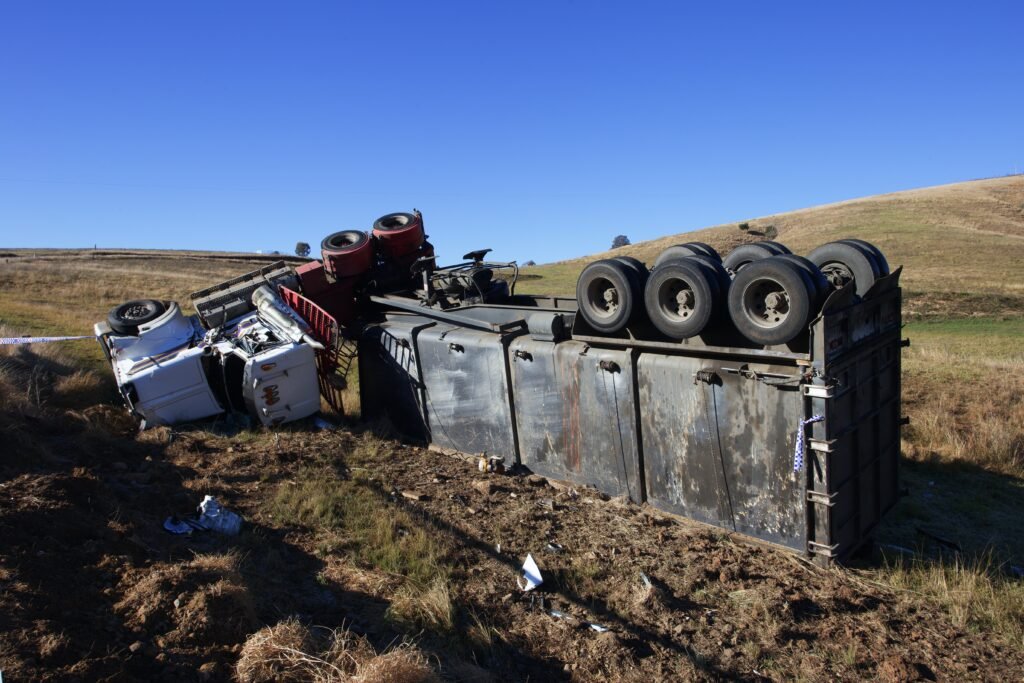
Automobile accidents are a risk that a person has to worry about when on the road, with different circumstances affecting both their likelihood and the severity of the accident. One subcategory of automobile accidents is commercial truck accidents, which as one can expect, have a higher likelihood of causing harm due to the sheer size and weight involved. These kinds of accidents occur all over the country, but how common are commercial truck accidents in Indiana?
How common are commercial truck accidents in Indiana?
A commercial truck — a truck that is designated for the transportation of commercial goods — can do a fair bit of damage if they are involved in an automobile accident. A commercial truck may include a large truck, a pickup truck that weighs over 10,000 pounds, buses with more than 15 passengers, and school buses. According to the Indiana Criminal Justice Institute, there were 16,910 commercial truck accidents that occurred in the state in 2017. This is approximately 7.7 percent of the total of 219,112 automobile accidents. One thing that is worth noting when it comes to this is that while the percentage is 7.7, the percentage of fatalities is even higher. There were a total of 911 total fatalities caused in automobile accidents, and 152 fatalities caused in commercial truck accidents. This translates to 16.6 percent, more than double the percentage of commercial vehicle accidents. Despite this number, only a small selection of that 152 were drivers of the commercial vehicles involved in the accident, accounting for only 18 of the fatalities. Interestingly, commercial truck accidents have risen by five percent every year from 2013 to 2017.
One of the major things that can help reduce commercial truck accidents are for minor infractions to be taken seriously. For example, if a truck driver is trying to get around certain rules and regulations, that is a major red flag that their actions may go on to cause serious harm if their poor driving or poor following of regulations catches up to them. Some truck drivers, however, go well beyond minor traffic infractions, such as truck drivers who speed, drive for longer than they are allowed at one time, or even in some cases, falsifying driving records in order to qualify to be a truck driver.
The causes of commercial truck accidents tend to be about the same as they are with other automobile accidents. These causes include not paying attention to other drivers, improper passing, driving too close behind another vehicle, not taking into account the dangers of weather conditions, and more. Of course, there are also less understandable actions, such as speeding, distracted driving, driving while under the influence, and more. A unique issue that commercial truck drivers have to be mindful of is that, due to the size of the vehicle, it can become more difficult for them to detect other drivers. This is referred to as a blind spot and is an issue that is common for all drivers. Of course, some people deal with it less than others. Furthermore, the fact that there is so much power behind a commercial vehicle means that the driver has to take more care to avoid making mistakes on the road. This can be more difficult for truck drivers who are expected to transport goods from one end of the nation to the other, but it is an expectation, nonetheless.
One factor that needs to be considered with respect to accidents is date, time, and location. Some areas are going to have more traffic than others, and as such, result in some places having a higher percentage of accidents. Night driving can also lead to accidents, mainly due to the fact that visibility is significantly worse. As mentioned above, driving in poor weather can also increase the risk of an accident. If a commercial truck driver finds themselves in either of these situations, they have to take care to drive more carefully than they would in ideal visibility and weather. Certain events may also prove to increase the risk of accidents. For example, people begin to drive to lunch at around noon, and return home at around 4, 5, 6, etc., meaning that traffic increases. Certain days are also more likely to have dangerous driving. Monday Night Football, for instance, encourages people to engage in drinking while watching the game. This by itself is no issue — millions of people enjoy alcohol responsibly every day. However, at the same time, there are those select drivers who decide to drive while under the influence once they leave the football viewing parties. This is not likely going to be a risk that a commercial driver gets drunk while watching the game and gets behind the wheel for their job. If that happened, they would likely not have their job for much longer. However, commercial drivers cannot anticipate the actions and behavior of the drivers with whom they share the road. Commercial truck drivers need to take care that they know what to expect from other drivers, and when to expect such behavior. On the other side of that coin, other drivers need to respect how deadly a commercial vehicle can be.
Understanding the duty of care
Every driver implicitly agrees to follow the legal concept of a duty of care. The duty of care, at least as it relates to driving, entails that when someone takes control of a vehicle, they have a duty to cause no harm to those around them. If someone behaves recklessly while operating a motor vehicle (commercial vehicle or otherwise), leading to one or more people having their vehicles damaged (or worse), this would constitute a violation of that duty of care. In the event that you have been injured or had some other kind of damage from a commercial truck accident, you may be entitled to receive compensation. One of the best things to do in this case is to retain the services of Indiana Truck Accident Lawyers. They will use their expertise and experience to get you the compensation that you deserve.
The types and amount of compensation you receive, if your case is successful, will depend on what the circumstances of the accident were. The most common type of damage is called compensatory damage, which is awarded to cover lost wages, medical bills, and/or repair costs. You may also sue for pain and suffering, in the event that the accident caused you to lose a loved one or otherwise suffered some kind of trauma. In rarer instances, you may be awarded punitive damages. These kinds of damages are typically awarded in instances where the other driver engaged in behavior that could be described as grossly negligent, intentional, and/or malicious. In most instances, you cannot receive more than four times the amount you received in compensatory damages. Liability may come into play when deciding the amount of money you should receive. Different states have different ways of handling liability percentages; some require 0 percent liability, while others allow up to 99 percent liability. In Indiana, you have to have less than 50 percent liability in order to receive any compensation whatsoever. At that point, the state deducts whatever percentage you were deemed liable from your compensation.



